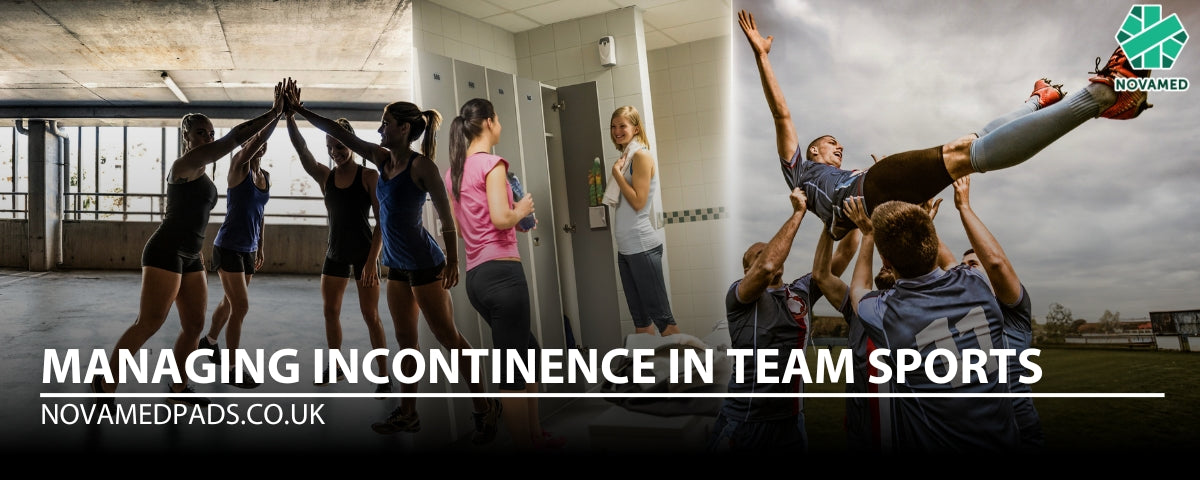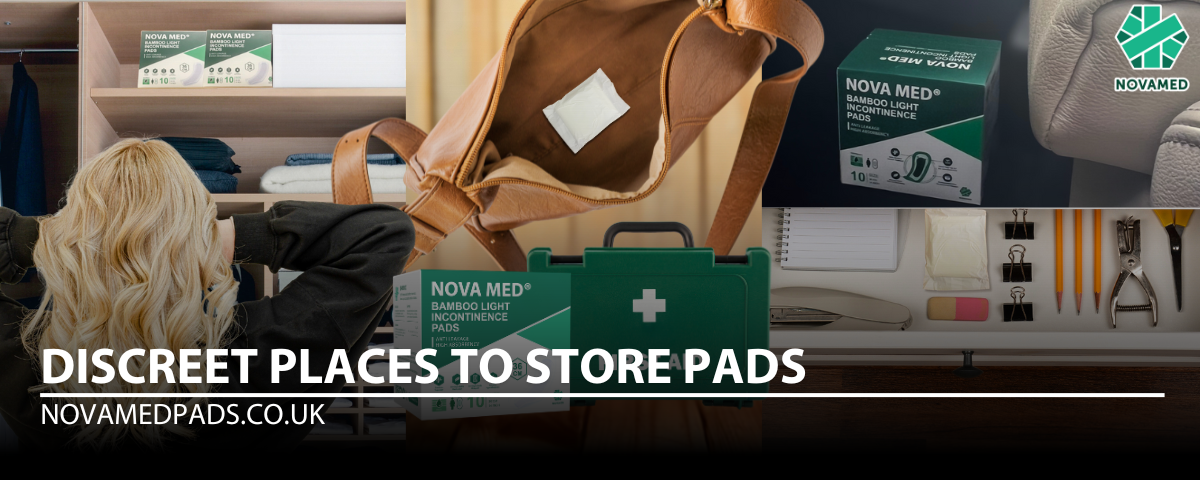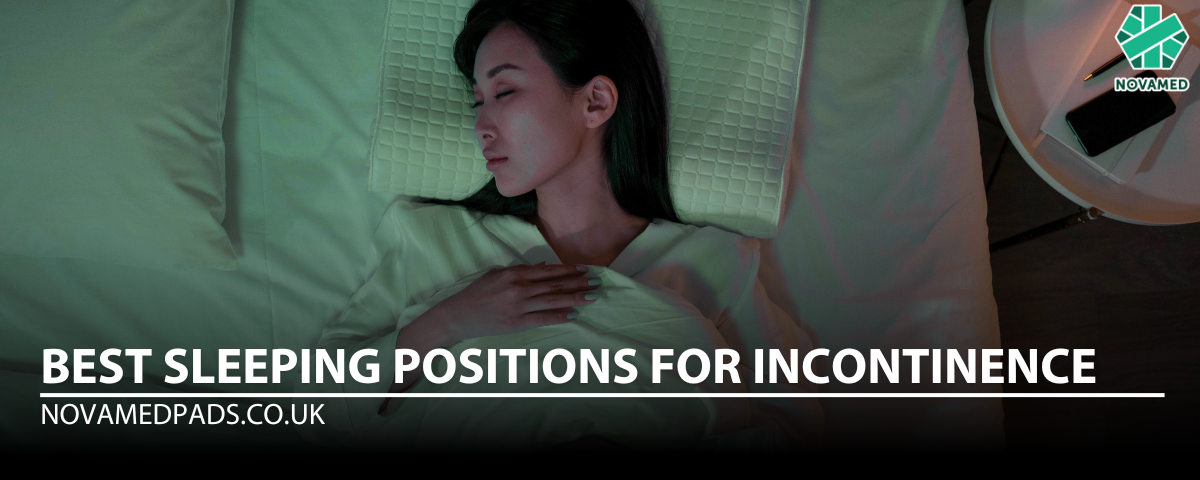
Playing Through It: Managing Incontinence in Team Sports
Incontinence is more common than people realise, with people from every walk of life affected, including athletes. For individuals involved in team sports, it can be tough to deal with incontinence when you are trying to focus on your sport. Furthermore, the use of dressing rooms and showers can make it even more daunting. However, with the right mindset, products, and preparation, you can confidently participate in team sports without disruption.
Research has revealed that many athletes deal with incontinence. A cross-sectional study shows a high prevalence in rope-skipping athletes due to the high-impact nature of the sport (Dobrowolski et al., 2019). This indicates that even in niche sports, incontinence need not limit athletic performance. A meta-analysis by Jorge et al. (2018) found that female athletes across various sports have a significantly higher risk of urinary incontinence compared to sedentary women, highlighting the importance of addressing this issue within the athletic community.
The Reality of Team Sports & Incontinence

The challenges of team sports can affect both how an athlete feels and how well they play. Using shared dressing rooms while wearing incontinence products can cause anxiety and self-consciousness. High-pressure environments like training sessions or competitive matches can make athletes worry about leaks, odours, or teammates discovering their condition. These concerns can lead to sports and bladder leaks, impacting their performance and confidence.
It is important to acknowledge that these are not uncommon challenges. A 2021 study on female gymnasts and cheerleaders highlighted that a significant portion of these athletes experience urinary incontinence due to the strenuous nature of their activities (Skaug et al., 2021). This is further supported by research from Carvalhais et al. (2018), which found a strong association between high-level sports participation and urinary incontinence in elite female athletes. Normalising and destigmatising the conversation around incontinence can help foster inclusivity, support, and confidence among athletes facing similar challenges.
Practical Strategies for Managing Incontinence in Team Sports
Here are some practical tips to help you manage incontinence while enjoying team sports:
-
Choosing the Right Incontinence Products for Athletes:
Choosing the right incontinence product is the best way to manage incontinence while playing sports. Athletes need products that are absorbent, comfortable, and discreet. Products like Bamboo Pads can provide leakproof comfort so you can get on with the game without the lingering thought of a leak. Studies have shown that athletes who use proper incontinence products are less likely to experience leaks during physical activity (Shephard, 2017).
-
Tips for Changing Before and After the Game:
For some people, changing rooms can add a level of discomfort. With a few simple tips, you can handle this aspect with confidence: - Bring a small bag with extra protection, wipes, and a change of clothes.
- Use private stalls or cubicles whenever possible.
- Change in phases, covering yourself with a towel or robe to minimise exposure.
-
Talking to Coaches or Teammates (If Necessary):
The best part of team sport is the bonds you form with both your teammates and coaches. A lot of the time they depend on you and equally you depend on them. If you feel comfortable, approaching them with your situation and the challenges you are facing can make it easier. Being open can foster a supportive team environment, especially in situations that may impact your game.
-
Preventing Leaks During Activity:
Ensuring you have an incontinence product that fits and offers adequate protection can reduce the risk of leaking. It is important to wear breathable sportswear that can help manage heat and prevent discomfort during long games and training sessions. A study by Teixeira et al. (2022) found that the type and severity of urinary incontinence can vary among elite track and field athletes depending on their event specialization, highlighting the need for tailored management strategies based on the specific demands of each sport.
Addressing the Social Aspect: Confidence in the Dressing Room

Dealing with the feelings and worries about what others might think can be even harder than dealing with the leaks themselves. People may deal with self-consciousness and increased anxiety when changing in the dressing room in the presence of their teammates. Building confidence is key to overcoming dressing room anxiety and incontinence.
Research shows that incontinence can cause significant emotional stress, particularly for female athletes. Many athletes with incontinence report anxiety, which in consequence lowers their self-esteem, but with the right support, these challenges can be mitigated (Carvalhais et al., 2017).
Conclusion
Participating in the sports you love is important, and incontinence does not have to prevent you from this. With the right preparation, product choices, and mentality, you can manage your continence with confidence and continue the sports you enjoy. There are people in every sport who face these challenges; you may not be the only one on your team. So step onto the court or the field, and remember, it’s your performance that defines you, not your condition.
Bladder and bowel incontinence may be caused by conditions which can be treated medically. Please consult your physician for medical advice and guidance.
References
- Borges, T.E.G., da Silva, F.N., de Oliveira, A.S. et al. Sport-related risk factors for moderate or severe urinary incontinence in master female weightlifters: A cross-sectional study. PLOS ONE 18, e0278376 (2023).
- Carvalhais, A., Araújo, J.P., Jorge, R.N. et al. Performing high-level sport is strongly associated with urinary incontinence in elite athletes: a comparative study of 372 elite female athletes and 372 controls. British Journal of Sports Medicine 52, 1586–1592 (2018).
- Dobrowolski, S., Pudwell, J., & Harvey, M. (2019). Urinary incontinence among competitive rope-skipping athletes: A cross-sectional study. International Urogynecology Journal.
- Jorge, R.N., Barbosa, A.M., & Carvalhais, A. (2018). Prevalence of Urinary Incontinence in Female Athletes: A Systematic Review with Meta-analysis. Fisiología del Ejercicio, 7(1), 42-52.
- Skaug, K., Engh, M.E., Frawley, H.C. & Bø, K. Urinary and anal incontinence among female gymnasts and cheerleaders—bother and associated factors. A cross-sectional study. International Urogynecology Journal (2021).
- Shephard, R. (2017). Sport, physical activity and urinary incontinence. The Health & Fitness Journal of Canada.
- Teixeira, R.V., Moreira, D.S., Teixeira, A.H. et al. Urinary Incontinence Among Elite Track and Field Athletes According to Their Event Specialization: A Cross-Sectional Study. Sports Medicine - Open 8, 72 (2022).




